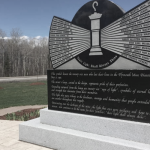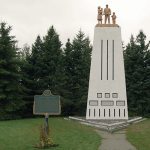As Canada’s economy industrialized through the early years of the 20th century, its workforce also changed. Once an economy driven by local craftsmen, skilled labourers and farmers, Canada’s cities were now filled with a mass, unskilled labour force drawn to work in the factories, mills and construction yards.
Canada’s West was also quickly growing and already chafing under the economic and political control based in the East. Its rapidly growing labour force and union movement reflected this geographic divide.
Workers in the west had a much more radical tradition. Many immigrants had come from socialist traditions and were looking for a new world order in a new land. The creation in 1905 of the Industrial Workers of the World found its strength in the western US and Canada and was symbolic of those views. Uniting all workers into one union was, many believed, the way to build true solidarity and achieve the social forms they wanted.
But Canada’s labour movement was dominated by unions from the East, which were controlled by American unions and focused on representing skilled workers in craft unions. The 1902 convention of the Dominion Trades and Labour Congress (TLC) saw the expulsion of most independent Canadian unions, including the Knights of Labor, which was the strongest voice for industrial workers, and a union that admitted almost all skilled and unskilled workers, women, and racialized workers.
Support for World War I and conscription further divided Canada’s unions. While the TLC supported the war and conscription, opposition to both was strong in the West. In 1917, western union leaders were outraged when Canadian labour leaders attended an American Federation of Labour (AFL) conference to call for labour to support US entry into the war and signed a pledge of loyalty to “the Republic of the United States against enemies, whomsoever they may be.” They saw it as an act subjugation to American interests and American craft unions.
The following year, well known British Columbia coal miner, labour organizer and Vice-President of the British Colombia Federation of Labour (BCFL), Albert “Ginger” Goodwin, was hunted down and murdered as a draft dodger – but western workers knew why he died. He had stood up to the coal companies and the government in his opposition to the war and to conscription. His death sparked Canada’s first general strike in Vancouver.
After the war, the workers and their families who had sacrificed much over the previous years were not willing to do so any longer. Soldiers returned from the war to unemployment. The prosperity they fought to secure was not being shared. Workers across Canada demanded better, so they organized and the strongest voices for change came from the West.
In 1919, at the annual “Western Labour Conference” meeting of western TLC unions, held in Calgary, things came to a head. Some 250 delegates representing major unions from Winnipeg to Victoria attended – the BCFL went so far as to move its convention to Calgary that year so more delegates could go. Years of frustration and alienation convinced a majority of those delegates to vote in support of a resolution to form a new “revolutionary industrial union”, separate from the AFL and the TLC. A founding convention for this “One Big Union” was set for June 1919.
Time was not on the OBU’s side. Before the founding convention happened on June 4, workers in Winnipeg went on a general strike. Many OBU supporters in Winnipeg were imprisoned and some deported following the suppression of the strike, so could not attend. The new union was founded but faced a changed landscape. After the defeat of strikers in Winnipeg, employers and governments were more willing to use all of the tools at their disposal against organizing workers, often with the support of the TLC.
The OBU was a moderate force in the West until 1956 when it merged into the newly formed Canadian Labour Congress (CLC). It never gained the strength that its founders had hoped for and, until the 1970s, the labour movement in Canada was largely controlled by unions based in the United States.
Today, the CLC is Canada’s largest labour organization. It brings together 55 national and international unions, 12 provincial and territorial federations of labour, and represents over 3.3 million workers. Over more than 60 years, the CLC has been instrumental in supporting the labour movement’s many achievements.


